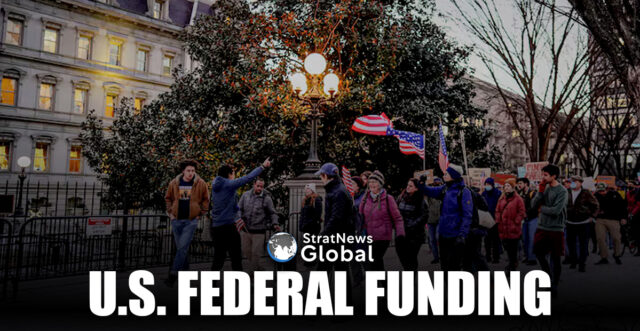On Monday, U.S. President Donald Trump temporarily suspended his threat of steep tariffs on Mexico and Canada, agreeing to a 30-day pause in exchange for concessions on border and crime enforcement. Despite this, tariffs on China are still scheduled to take effect imminently.
Both Canadian Prime Minister Justin Trudeau and Mexican President Claudia Sheinbaum said they had agreed to bolster border enforcement efforts in response to Trump’s demand to crack down on immigration and drug smuggling. That would pause 25% tariffs due to take effect on Tuesday for 30 days.
Canada, Mexico Bolster Borders
Canada agreed to deploy new technology and personnel along its border with the United States and launch cooperative efforts to fight organized crime, fentanyl smuggling and money laundering.
Mexico agreed to reinforce its northern border with 10,000 National Guard members to stem the flow of illegal migration and drugs.
‘Pleased With Initial Outcome’
The United States also made a commitment to prevent trafficking of high-powered weapons to Mexico, Sheinbaum said.
“As President, it is my responsibility to ensure the safety of ALL Americans, and I am doing just that. I am very pleased with this initial outcome,” Trump said on social media.
The agreements forestall, for now, the onset of a trade war that economists predicted would damage the economies of all involved and usher in higher prices for consumers.
After speaking by phone with both leaders, Trump said he would try to negotiate economic agreements over the coming month with the two largest U.S. trading partners, whose economies have become tightly intertwined with the United States since a landmark free-trade deal was struck in the 1990s.
China Tariffs Still Planned
No such deal has emerged for China, which faces across-the-board tariffs of 10% that are poised to begin at 12:01 a.m. ET on Tuesday (0501 GMT). A White House spokesperson said Trump would not be speaking with Chinese President Xi Jinping until later in the week.
Trump warned he might increase tariffs on Beijing further.
“China hopefully is going to stop sending us fentanyl, and if they’re not, the tariffs are going to go substantially higher,” he said.
China has called fentanyl America’s problem and said it would challenge the tariffs at the World Trade Organization and take other countermeasures, but also left the door open for talks.
The latest twist in the saga sent the Canadian dollar soaring after slumping to its lowest in more than two decades. The news also gave U.S. stock index futures a lift after a day of losses on Wall Street.
Industry groups, fearful of disrupted supply chains, welcomed the pause.
“That’s very encouraging news,” said Chris Davison, who heads a trade group of Canadian canola producers. “We have a highly integrated industry that benefits both countries.”
EU On Trump Radar
Trump suggested on Sunday the 27-nation European Union would be his next target, but did not say when.
EU leaders at an informal summit in Brussels on Monday said Europe would be prepared to fight back if the U.S. imposes tariffs, but also called for reason and negotiation. The U.S. is the EU’s largest trade and investment partner.
Trump hinted that Britain, which left the EU in 2020, might be spared tariffs.
Trump acknowledged over the weekend that his tariffs could cause some short-term pain for U.S. consumers, but says they are needed to curb immigration and narcotics trafficking and spur domestic industries.
The tariffs as originally planned would cover almost half of all U.S. imports and would require the United States to more than double its own manufacturing output to cover the gap – an unfeasible task in the near term, ING analysts wrote.
Other analysts said the tariffs could throw Canada and Mexico into recession and trigger “stagflation” – high inflation, stagnant growth and elevated unemployment – at home.
(With inputs from Reuters)





